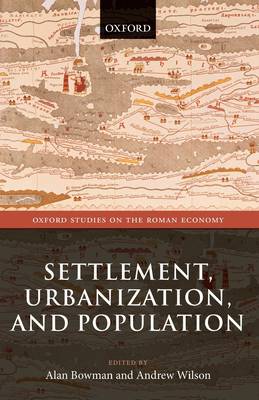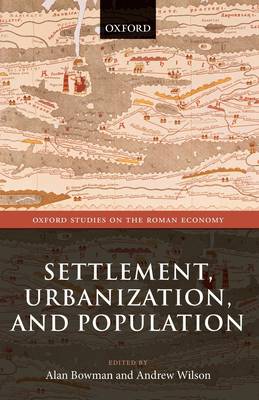
- Afhalen na 1 uur in een winkel met voorraad
- Gratis thuislevering in België vanaf € 30
- Ruim aanbod met 7 miljoen producten
- Afhalen na 1 uur in een winkel met voorraad
- Gratis thuislevering in België vanaf € 30
- Ruim aanbod met 7 miljoen producten
Zoeken
Settlement, Urbanization, and Population
€ 41,45
+ 82 punten
Omschrijving
This volume presents a collection of studies focussing on population and settlement patterns in the Roman empire in the perspective of the economic development of the Mediterranean world between 100 BC and AD 350. The analyses offered here highlight the issues of regional and temporal variation in Italy, Spain, Britain, Egypt, Crete, and Asia Minor from classical Greece to the early Byzantine period. The chapters fall into two main groups, the first dealing with the evidence for rural settlement, as revealed by archaeological field surveys, and the attendant methodological problems of extrapolating from that evidence a view of population; and the second with city populations and the phenomenon of urbanization. They proceed to consider hierarchies of settlement in the characteristic classical pattern of city plus territory, and the way in which those entities are defined from the highest to the lowest level: the empire as 'city of Rome plus territory', then regional and local hierarchies, and, more precisely, the identity and the nature of the 'instruments' which enables them to function in economic cohesion.
Specificaties
Betrokkenen
- Uitgeverij:
Inhoud
- Aantal bladzijden:
- 384
- Taal:
- Engels
- Reeks:
Eigenschappen
- Productcode (EAN):
- 9780198788515
- Verschijningsdatum:
- 24/12/2018
- Uitvoering:
- Paperback
- Formaat:
- Trade paperback (VS)
- Afmetingen:
- 137 mm x 213 mm
- Gewicht:
- 544 g

Alleen bij Standaard Boekhandel
+ 82 punten op je klantenkaart van Standaard Boekhandel
Beoordelingen
We publiceren alleen reviews die voldoen aan de voorwaarden voor reviews. Bekijk onze voorwaarden voor reviews.










